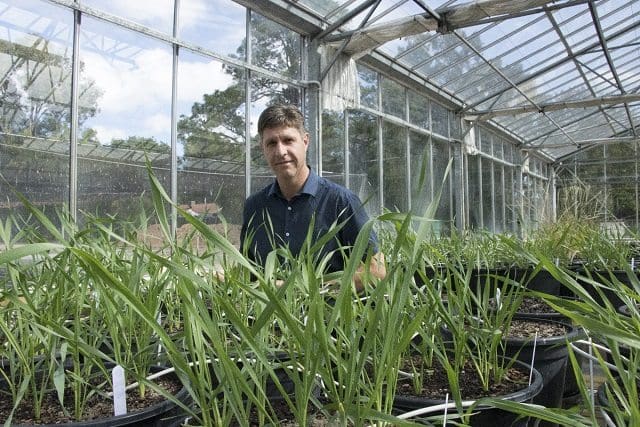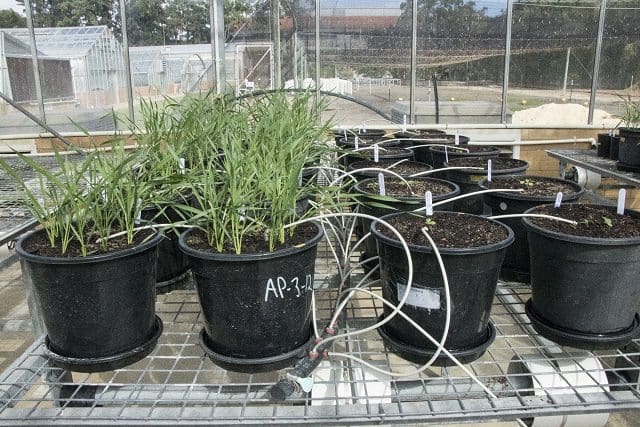Ask a WeedSmart Expert
EVERYONE would like the answers to farming’s problems to be simple, but the fact is, all over-simplistic solutions are prone to collapse.
This has been repeatedly demonstrated with different weed species adapting to challenge different farming systems or practices.
Australian Herbicide Resistance Initiative research agronomist, Dr Mike Ashworth, says weeds use two mechanisms to survive weed control methods – they either become ‘immune’ or ‘evade’ the control tactic.

Dr Mike Ashworth says the best way to keep all weed control tactics alive is to be unpredictable in your choice of crops, planting times, herbicide choices and harvest weed seed control methods.
“There is extensive research in the area of herbicide resistance showing the molecular, genetic and biological mechanisms that different weeds can use to become immune to herbicide treatments,” he said.
“Just as the systematic use of herbicides will lead to resistance, the routine use of non-herbicide weed control tactics will select for individual plants that can evade that tactic.”
In one study, Dr Ashworth started with wild radish plants that had not been subjected to harvest weed seed control and systematically collected seed from early flowering individuals. The seeds were planted to produce the next generation for further selection.

This pot trial is investigating the fitness penalty that may be associated with the early flowering trait of these specially selected wild radish plants when faced with stiff crop competition from a wheat crop compared to no competition.
“Within five generations of selection the wild radish population had more than halved the time to flowering – from 60 days to just 29 days,” he said.
“As a result, these plants will be carrying well-matured pods at harvest, and will be more likely to drop their seed, effectively evading seed capture at harvest. This is even more likely in years where there are periods of water deficit, high temperature or high wind.”
The good news is that the early flowering wild radish populations produced less biomass prior to flowering than the later flowering individuals, likely making them more susceptible to crop competition.
Unfortunately, these early flowering plants also had poor structural integrity, with more pods set below the harvest cutting height.
How can I stop weeds evading weed control tactics?
Short answer: Avoid predictable and repetitive farming systems and weed control tactics, and aim to establish highly competitive crops.
Longer answer: The more diversity the better. Look for ways to add different crops to the rotation, mix and rotate herbicide modes of action, use different row spacings, alter sowing times and implement different strategies before and at harvest.
Take advantage of weed control that comes through increased crop competition. For example, the early flowering wild radish plants are smaller, potentially making them more resistant to harvest weed seed control, but more susceptible to crop competition.
All weed control strategies are most effective when weed numbers are low so concentrate on ways to drive down weed numbers, prevent seed set and remove survivors.
What about crop competition – can weeds evade that?
Short answer: Yes, weeds will respond to increased crop competition.
Longer answer: In a highly competitive crop a few individual plants are likely to gain an advantage through increased vigour or plant height. If left unchecked these individuals can set seed and the population can increase in size. This is less likely to become a problem if the farming system includes a range of crops and pastures of varying heights for example. A trait that is an advantage in one situation is often a disadvantage in another.
The combination of highly competitive cropping with harvest weed seed control is a great example. Vigorous plants often hold their seed high in the crop canopy and so are readily collected at harvest in a competitive crop environment. On the other hand, these weeds would flourish and potentially lodge in a less competitive crop, thereby evading harvest weed seed control.
How are weeds evading pre-emergent herbicides?
Short answer: Through selection for later germination.
Longer answer: Pre-emergent herbicides are being increasingly relied on to provide early weed control. Individual weed seeds that remain dormant for longer and germinate later in the season can evade pre-emergent herbicides altogether or are exposed to a low dose that can lead to resistance.
By mixing up planting dates and using different pre-emergence herbicides with different modes of action, growers can disrupt the shift in dormancy.
Weeds that emerge later, will be more susceptible to crop competition from an early seeded crop. Get the jump on weeds and make sure your crop is up and away.
Source: WeedSmart
……………………..
How to ask a WeedSmart question
Ask your questions about ways to out-wit weeds on the WeedSmart Innovations Facebook page WeedSmartAU, Twitter @WeedSmartAU or the WeedSmart website http://www.weedsmart.org.au/category/ask-a-weedsmart-expert/
‘WeedSmart’ is an industry-led initiative that aims to enhance on-farm practices and promote the long term, sustainable use of herbicides in Australian agriculture.
Grain Central: Get our free daily cropping news straight to your inbox – Click here

HAVE YOUR SAY